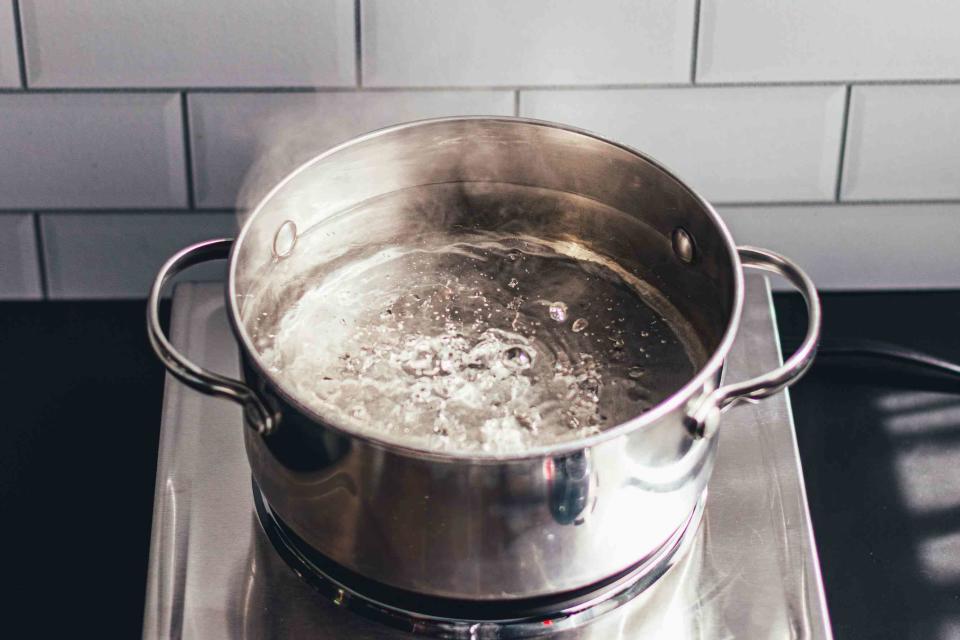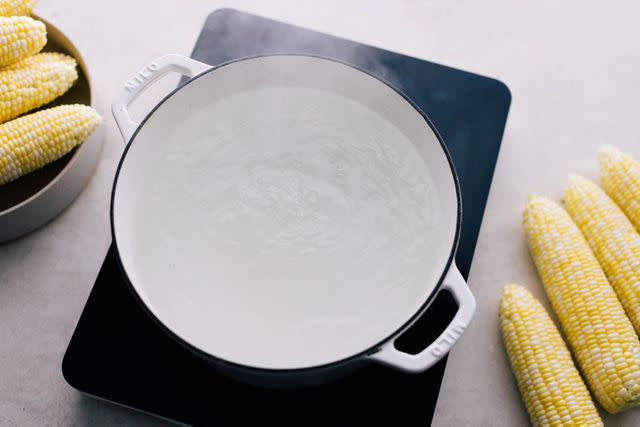What's The Difference Between Boiling And Simmering Water?
The key difference between simmering and boiling is the size of the bubbles.

Courtney West
One of the most basic cooking skills is boiling water. Once you've achieved that, a world of possibilities opens up: cooking pasta, hard-boiling eggs, and even blanching veggies.
What's less basic is catching the difference between boiling and simmering, as the two cooking methods often are mistaken for each other. Boiling, a high-heat method is better for speedy dishes, while simmering is lower in temperature and gentler.
Read on to learn the difference between simmering and boiling water and when to use each cooking method.
What Is Simmering Water?
Simmering water has small bubbles that occasionally rise to the surface and little to no steam. This low-and-slow style of cooking is super versatile: Simmer to reduce or thicken sauces or break down cuts of meat. You’ll also often see the simmer as an instruction when making stews and soups. Or use simmering water to poach delicate ingredients like fish, eggs, or fruit.
Clocking in between 185 to 205°F, simmering water is the stage right before boiling and can easily tip into higher heat and rapid bubbles. Once water is simmering, keep a close eye, and turn down the temperature to prevent this if you need to maintain a simmer.
What Is Boiling Water?
Boiling water has lots of bubbles pushing through the surface of the water and steam coming out of the pot or kettle. This high-heat method of cooking is great for speedy dishes that only require a few minutes, for example, cooking pasta, blanching vegetables, or boiling an egg. Boiling water is 212°F.
Related: Should You Rinse Pasta?

Simmer Vs. Boil: What's the Difference?
Simmering water is the stage before boiling water. It is gently bubbling, hot water about 20 degrees Fahrenheit cooler than boiling water. It is ideal for soups, stews, and braises. Boiling water is rapidly bubbling and steaming water that can quickly cook grains or blanch vegetables.
For more Southern Living news, make sure to sign up for our newsletter!
Read the original article on Southern Living.

